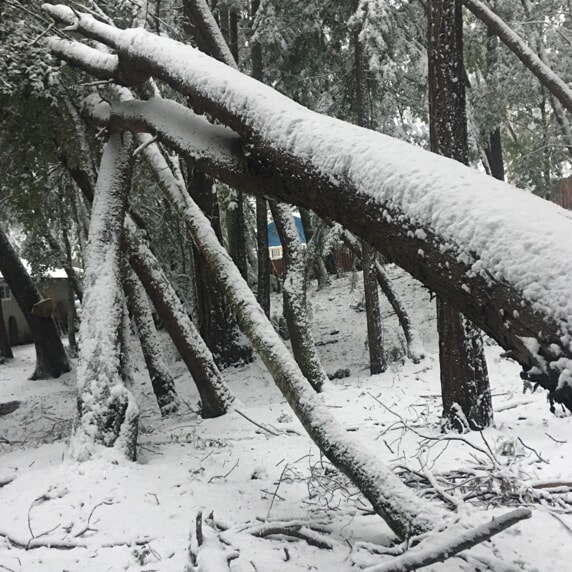
Potential Hazards and Risks During Northern California Fire Safety Cleanup
Wildfire safety protocols have been executed way before fire season so Northern California communities can remain proactive and potentially avoid massive wildfire damage. One of the most important things you can do as a homeowner is to remove and reduce vegetation on your properties – trees, brush, leaves, branches, pine needles, etc – so fire does not have as much fuel to continue burning.
However, with vegetation clearing comes some risk. Making yourself aware of potential hazards as you begin cleaning up your property will ensure your personal safety as well as the safety of your home. There’s nothing worse than trying to accomplish a huge task and then being forced to stay inside due to an injury.
Before you even think of going outside to perform vegetation cleanup, make sure you are wearing sunscreen, long clothing, a hat and protective shoes. Bring gloves and protective eyewear with you as well to protect your hands and face.
What are some potential hazards and risks to keep in mind?
Using Power Tools Potential electric shock or burning can occur if tools such as chainsaws, lawnmowers, hedgetrimmers, weed wackers and any heavy equipment are used. Rocks can be struck and cause a spark or head injury. If any of these pieces of equipment are not used under complete control, accidental dismemberment can happen. Do not allow children around any use of power tools.
Cleanup Near Bodies of Water Make sure someone else is with you at all times while performing cleanup outside on your property, especially around bodies of water. Depending on the saturation of the ground, you may slip or sink and hurt yourself. If you slip and fall into a pond, lake or creek, you may not be able to call for help and drowning may occur.
Trees and Branches
Watch your step as you remove fallen branches. They may be covering very sharp protruding twigs or smaller branches. Anticipate they may be heavy; consider cutting them into logs you can transport to make the task easier. If you are removing branches from a tree, make sure no one is on the path of the falling branch and you have an accurate trajectory.
Vegetation on the Ground Fires spread incredibly fast when there’s a consistent stream of dried vegetation on the ground. While clearing brush is very helpful, be aware of plants that have thorns or stickers and avoid poison oak and any other harmful vegetation. Plants and brush can really irritate your skin; you should always wear long pants or overalls while working in a heavily forested area. Check for ant hills, hornet or yellow jacket nests, etc. Bugs, ticks and spiders will also be present so avoid them and routinely check your clothing.
Removing or Lifting Fallen or Felled Trees
Because of the abnormal amount of snow Northern California had experienced in January 2021, many trees have fallen to the ground or partially uprooted which makes them even more difficult and dangerous to remove. If you are not experienced and don’t have the tools or assistance, it’s never a good idea to try to fall a tree yourself. This task is the most dangerous as trees are heavy and improper communication or technique may result in a tree falling onto your house. Tree falling can all of a sudden change trajectory or a person may become crushed by a tree. Contact a professional tree removal service that has the knowledge and experience with properly cutting down trees.
Knowing all these potential hazards and risks should not prevent you from performing or scheduling cleanup on your property. Having this information ahead of the large task of vegetation removal will keep you ahead of the game and give you confidence in creating a safer environment for you and your family.

